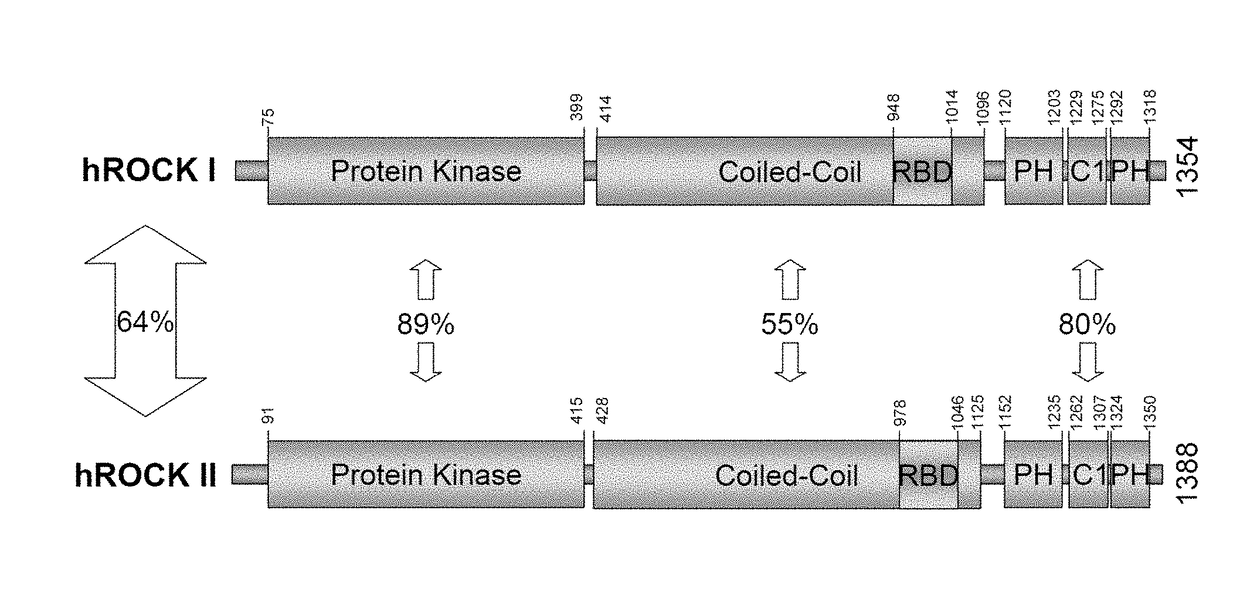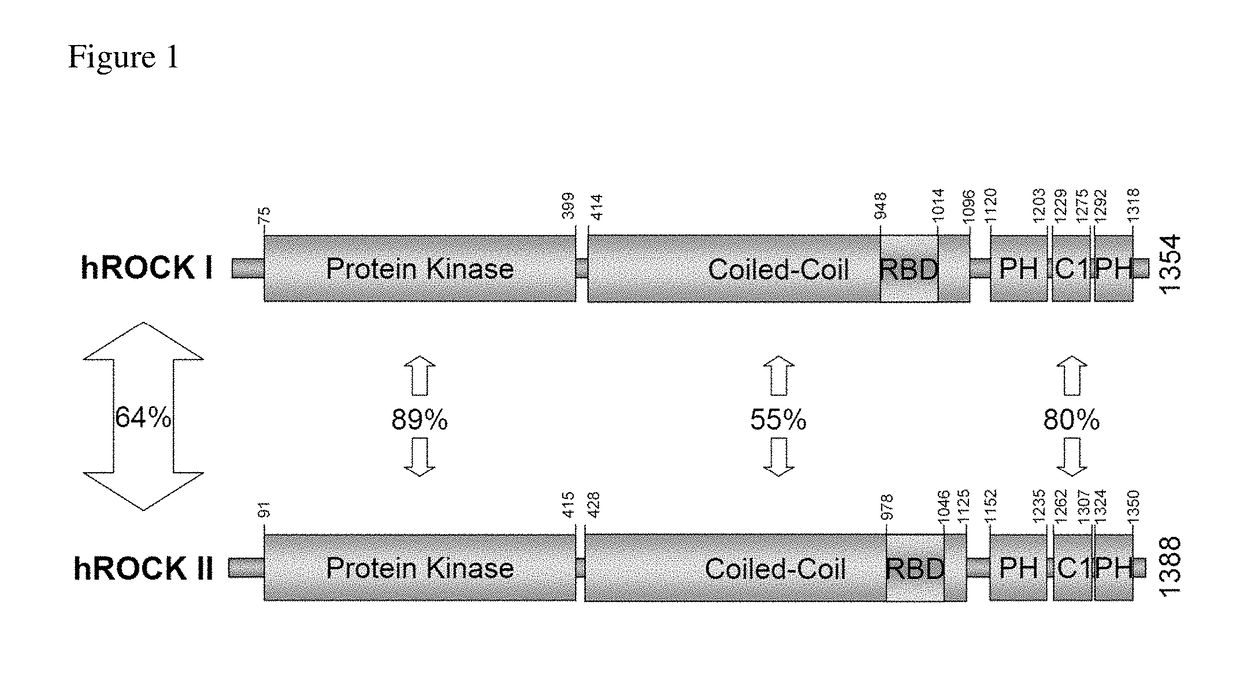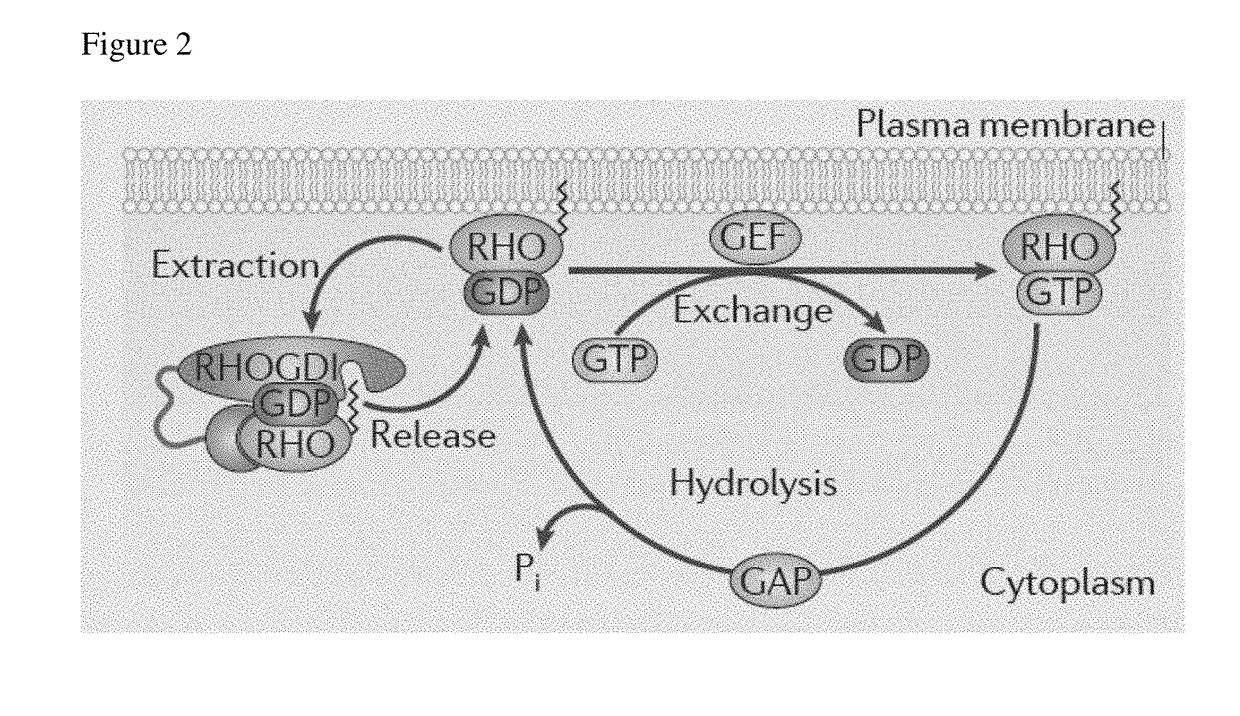Use of telmisartan to prevent and treat graft versus host disease and other alloimmune and autoimmune diseases
a technology of alloimmune and autoimmune diseases and telmisartan, which is applied in the direction of immunological disorders, instruments, drug compositions, etc., can solve the problems of serious autoimmune diseases, increased risk of mortality, and impaired quality of li
- Summary
- Abstract
- Description
- Claims
- Application Information
AI Technical Summary
Benefits of technology
Problems solved by technology
Method used
Image
Examples
example 1
The Effect of ROCK Inhibitors on GVHD in vivo
[0258]In a previous study, B6C3 F1 mice (offspring of C57BL / 6 female mice crossed with C3H male mice; obtained from Jackson Laboratory) were used as a model of GVHD in order to determine the effect of the ROCK inhibitor Fasudil® on GVHD in vivo. Iyengar S, et al., Biol Bood Marrow Transplant. 20(8): 1104-1111 (2014). These mice are commonly used as a model because they mimic the spectrum of the host immune responses in GVHD. For example, CD4 and CD8 T cells in B6C3 recipient mice respond to MHC class I and class II disparity and minor HA mismatches between donor and recipient cells (Reddy P, Ferrara J L M. Mouse models of graft-versus-host disease. 2009 Feb. 28. In: StemBook (Internet). Cambridge (Mass.): Harvard Stem Cell Institute; 2008).
[0259]Adult male C3B6 mice exposed to lethal irradiation received anti-T cell treated bone marrow transplants (ATBM) from donor C3H mice with or without added donor T cells. In some cases, mice receivin...
example 2
The Effect of ROCK Inhibitors on Initial Weight Loss Associated with GVHD
[0262]It is well known that weight loss occurs in patients with GVHD. Jacobsohn D A, et al., Bone Marrow Tranplant. 29(3): 231-236 (2002). In this study, C3B6 mice were used to determine the effect of ROCK inhibitors on GVHD-associated weight loss.
[0263]C3B6 mice were treated according to Example 1. ATBM+T cells+Fasudil® recipient mice experienced roughly the same magnitude of weight loss (˜25% total body weight) as ATBM+T cells recipient mice over the first three weeks post-transplant (data not shown). In most experiments, the ATBM+T cells+Fasudil® recipient mice subsequently recovered more weight than ATBM+T cells recipient mice, but less weight than ATBM only control mice (data not shown). Despite the similar initial weight losses of Fasudil® treated and untreated T cell recipients, the two groups had different rates of diarrhea. The majority (>70%) of untreated mice had loose stools for one or more days bet...
example 3
The Effect of ROCK Inhibitors on Skin Inflammation in Mice Receiving Donor T Cells
[0265]Skin is most commonly affected and usually the first organ involved in GVHD. Ferrara J L M, et al., Lancet. 373(9674): 1550-1561 (2009). In this study, C3B6 mice were used to determine the effect of ROCK inhibitors on GVHD-associated skin inflammation.
[0266]C3B6 mice were treated according to Example 1. Fasudil® did not prevent skin inflammation in ATBM+T cells+Fasudil® recipient mice. Skin inflammation in C3B6 treated mice occurred in the fourth week and gradually waned over a two week-period.
PUM
| Property | Measurement | Unit |
|---|---|---|
| diastolic blood pressure | aaaaa | aaaaa |
| volume of distribution | aaaaa | aaaaa |
| time | aaaaa | aaaaa |
Abstract
Description
Claims
Application Information
 Login to View More
Login to View More - R&D
- Intellectual Property
- Life Sciences
- Materials
- Tech Scout
- Unparalleled Data Quality
- Higher Quality Content
- 60% Fewer Hallucinations
Browse by: Latest US Patents, China's latest patents, Technical Efficacy Thesaurus, Application Domain, Technology Topic, Popular Technical Reports.
© 2025 PatSnap. All rights reserved.Legal|Privacy policy|Modern Slavery Act Transparency Statement|Sitemap|About US| Contact US: help@patsnap.com



